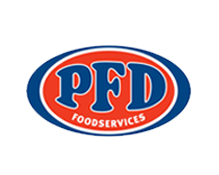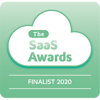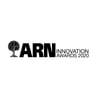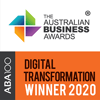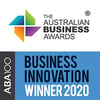Descriptive Statistics
Descriptive statistics: Descriptive statistics are methods used to summarize data.
Descriptive Statistics is a powerful tool used to summarise and analyse data sets. It allows researchers to organise large amounts of information in an understandable way, offering insight into the underlying patterns that inform our understanding of the world. This article will explore the basics of descriptive statistics, examining how it works and what it can offer us.
Descriptive statistics helps us make sense out of vast quantities of data collected from various sources. By organising this data into meaningful categories, we are able to gain valuable insights into trends, relationships between variables, correlations, concentrations and other important characteristics. Through these insights we can better understand complex phenomena and find ways to improve upon existing systems or processes.
In order to fully grasp how descriptive statistics works, one must first become familiar with its main components: measures of central tendency (mean, median and mode), standard deviation as a measure of variability, graphical displays such as bar charts or histograms, correlation coefficients for measuring linear associations between two variables, outliers and other statistical tests such as T-tests or ANOVAs. These concepts form the basis for interpreting descriptive statistics results accurately - allowing us to draw meaningful conclusions about the data being analysed.
What Is An Example Of A Descriptive Statistic?
Descriptive statistics are a data analysis tool used to summarise and describe the characteristics of a data set. They provide an overview of the features in a dataset by using summary metrics, such as averages, standard deviation, central tendency and frequency distributions. This type of statistical technique is often employed in data science applications where it is important to understand the characteristics of large datasets.
An example of descriptive statistic would be calculating the interquartile range (IQR) for a given sample of data. The IQR is defined as the difference between the upper quartiles and lower quartiles in a given dataset or population. It provides useful information regarding how spread out values are within the data set and gives us insight into its shape or distribution. In addition to this, we can use other descriptives stats like mean, median and mode to further analyse our data sample. These summary statistics help us identify trends, correlations and outliers that may exist within our dataset which could prove beneficial when making predictions or decisions based on our findings.
What Are The 5 Descriptive Statistics?
Descriptive statistics are used to summarise data and make it easier to understand. They provide a quick look at the centre, spread, shape of a dataset, as well as any outliers or unusual observations. There are five main types of descriptive statistics:
- measures of spread,
- measures of central tendency,
- box plots,
- frequency tables,
- and bar charts.
Measures of spread refer to how much variation there is in the data set. Common examples include standard error and absolute deviation. Box plots show how different parts of the data relate to each other by displaying quartiles along with minimums and maximum values. Frequency tables break down numbers into categories which helps visualise patterns among individual data points. Bar charts summarise numerical information visually so that trends can be quickly identified. Lastly, scatter-plots help identify correlation between two variables by plotting out individual points on an x-axis and y-axis coordinate plane.
All these descriptive statistics give helpful insight into datasets and enable us to more accurately analyse them. Measures like correlation coefficients can tell us whether two variables have strong relationships while box plots highlight differences between distributions such as median values versus extremes within a sample set. Frequency tables allow for comparison between multiple groups while bar graphs compare proportions across categories over time. Finally, scatter plots display relationships between two sets of quantitative data enabling researchers to determine if changes in one variable correspond with changes in another variable over time.
What Is Descriptive Statistics In Research?
Descriptive statistics is a branch of data analysis that focuses on summarising and describing the properties of a given collection of data points. It provides measures to describe the characteristic behaviour of a dataset, including standard errors, statistical tests, and independent variables. The collected information from descriptive statistics can be used for further investigations such as determining normal distributions or other categorical variables in order to understand the underlying relationships between different sample sizes.
In research, descriptive statistics are often used to answer questions about large datasets by providing simple numerical summaries about certain measures of centre (e.g., mean, median). By organising the data into simple metrics like these, researchers are able to gain more insight into how their study’s results fit within larger trends or patterns in the population at-large. Additionally, this type of data can help inform decisions when conducting future experiments or studies.
The following bullet point list outlines some key components related to using descriptive statistics in research:
- Standard Errors – A measure of precision associated with an estimated value
- Statistical Tests – An evaluation process which compares observed values against expectations
- Data Points – Specific pieces of measurable information available for analysis
- Normal Distribution – A probability distribution represented via bell curve graphically
- Measures of Centre – Statistics used to summarise central tendency (mean, median) By utilising all these components together with accurate data gathering techniques and reliable analytical methods, researchers can effectively use descriptive statistics to draw meaningful conclusions from their findings.
What Is An Example Of Descriptive Statistics In A Research Study?
Descriptive statistics is a branch of quantitative analysis that deals with the summarisation, organisation and presentation of data sets. This type of statistical technique focuses on providing an overall picture of raw data using measures such as mean deviation, bivariate analysis and other techniques. It provides important information about a particular set of data without making any inferences or assumptions about it. Descriptive statistics are often used in research studies to help develop hypotheses for further testing through inferential statistics.
There are numerous examples of descriptive statistics in research studies. For instance, one may use a mean to represent the average value across all observations in a dataset; this is known as central tendency. Similarly, standard deviation can be used to measure how scattered the values are within a given set of numbers or variables. Other useful descriptive statistics include correlation coefficients which describe the relationship between two variables and various graphical methods like histograms and box-plots which can provide insight into distributions and outliers within datasets quickly and accurately. Additionally, researchers might also employ specific tests such as t-tests or chi-square tests to uncover meaningful relationships among variables within their study’s data sets.
In summary, these basic tools allow researchers to gain an understanding from their raw data prior to conducting more complex analyses like regression modelling or multivariate analysis. Descriptive statistics thus offer key insights necessary for developing effective quantitative strategies for answering research questions and making decisions based on empirical evidence gathered from large data sets.
Conclusion
Descriptive statistics are a powerful tool for summarising and analysing data. Descriptive statistics provide an overview of the main characteristics in a dataset, such as its average value or range of values. The five most common descriptive statistics include measures of central tendency (mean, median and mode), measures of variability (standard deviation and interquartile range), and count/frequency distributions.
In research, descriptive statistics allow researchers to summarise their findings in an efficient manner. Examples of these types of statistical analyses can include looking at the averages or ranges of scores on variables that were studied in a sample population, or comparing different groups within the same study to see if there is any difference between them. For example, when studying educational attainment levels among adults aged 25-35, descriptive analysis may be used to compare the mean level of education achieved by those who have attained college degrees versus those who do not have one.
Overall, descriptive statistics are useful methods for understanding both individual datasets and larger trends across multiple studies. By providing concise summaries of large amounts of data, they make it easier for researchers to identify patterns that could otherwise be difficult to spot on one’s own. As such, it is important for researchers to take advantage of this valuable tool whenever possible.
PREVIOUS NARROW AI GLOSSARY TERM
NEXT NARROW AI GLOSSARY TERM
Descriptive Statistics Definition
Exact match keyword: Descriptive Statistics N-Gram Classification: Descriptive Statistics, Statistical Analysis Substring Matches: Statistics, Descriptive Long-tail variations: "Descriptive Statistical Analysis", "Descriptive Data Analysis" Category: Mathematics, Science, Business Search Intent: Research, Solutions Keyword Associations: Probability, Data Visualization, Regression Analysis Semantic Relevance: Probability Theory, Data Visualization, Cross Tabulation Parent Category: Mathematics Subcategories : Probability Theory, Data Visualization, Regression Analysis Synonyms :Data Analysis , Statistical Methods ,Probabilistic Modeling Similar Searches :Probabilistic Modeling ,Statistical Methods ,Data Analysis Geographic Relevance: Global Audience Demographics :Mathematicians , Scientists ,Business Professionals Brand Mentions : Excel , SPSS , R Industry-specific data : Mean & Median values ,Outliers detection Commonly used modifiers : “Advanced” , “Tools” ,“Methods” Topically relevant entities : Probability Theory, Data Visualization – Cross Tabulation & Correlation; RegressionAnalysis; Statistical Methods & Techniques."Larry will be our digital expert that will enable our sales team and add that technological advantage that our competitors don't have."
Kerry Smith
CEO, PFD Foods
$1.6 billion in revenue 
"Lion is one of Australasia’s largest food and beverage companies, supplying various alcohol products to wholesalers and retailers, and running multiple and frequent trade promotions throughout the year. The creation of promotional plans is a complicated task that requires considerable expertise and effort, and is an area where improved decision-making has the potential to positively impact the sales growth of various Lion products and product categories. Given Complexica’s world-class prediction and optimisation capabilities, award-winning software applications, and significant customer base in the food and alcohol industry, we have selected Complexica as our vendor of choice for trade promotion optimisation."
Mark Powell
National Sales Director, Lion
"At Liquor Barons we have an entrepreneurial mindset and are proud of being proactive rather than reactive in our approach to delivering the best possible customer service, which includes our premier liquor loyalty program and consumer-driven marketing. Given Complexica’s expertise in the Liquor industry, and significant customer base on both the retail and supplier side, we chose Complexica's Promotional Campaign Manager for digitalizing our spreadsheet-based approach for promotion planning, range management, and supplier portal access, which in turn will lift the sophistication of our key marketing processes."
Richard Verney
Marketing Manager
Liquor Barons

"Dulux is a leading marketer and manufacturer of some of Australia’s most recognised paint brands. The Dulux Retail sales team manage a diverse portfolio of products and the execution of our sales and marketing activity within both large, medium and small format home improvement retail stores. We consistently challenge ourselves to innovate and grow and to create greater value for our customers and the end consumer. Given the rise and application of Artificial Intelligence in recent times, we have partnered with Complexica to help us identify the right insight at the right time to improve our focus, decision making, execution, and value creation."
Jay Bedford
National Retail Sales Manager
Dulux

"Following a successful proof-of-concept earlier this year, we have selected Complexica as our vendor of choice for standardizing and optimising our promotional planning activities. Complexica’s Promotional Campaign Manager will provide us with a cloud-based platform for automating and optimising promotional planning for more than 2,700 stores, leading to improved decision-making, promotional effectiveness, and financial outcomes for our retail stores."
Rod Pritchard
Interim CEO, Metcash - Australian Liquor Marketers
$3.4 billion in revenue 
"After evaluating a number of software applications and vendors available on the market, we have decided to partner with Complexica for sales force optimisation and automation. We have found Complexica’s applications to be best suited for our extensive SKU range and large set of customers, being capable of generating recommendations and insights without burdening our sales staff with endless data analysis and interpretation.
Aemel Nordin
Managing Director, Polyaire
"DuluxGroup is pleased to expand its relationship with Complexica, a valued strategic partner and supplier to our business. Complexica’s software will enable DuluxGroup to reduce the amount of time required to generate usable insights, increase our campaign automation capability, personalise our communications based on core metrics, and close the loop on sales results to optimise ongoing digital marketing activity."
James Jones
Group Head of CRM, DuluxGroup
"Instead of hiring hundreds of data scientists to churn through endless sets of data to provide PFD with customer-specific insights and personalised recommendations, Larry, the Digital Analyst® will serve up the answers we need, when we need them, on a fully automated basis without the time and manual processes typically associated with complex analytical tasks.”
Richard Cohen
CIO, PFD Foods
$1.6 billion in revenue 
"As a global innovator in the wine industry, Pernod Ricard Winemakers is always seeking ways to gain efficiencies and best practices across our operational sites. Given the rise of Artificial Intelligence and big data analytics in recent times, we have engaged Complexica to explore how we can achieve a best-in-class wine supply chain using their cloud-based software applications. The engagement is focused on Australia & New Zealand, with a view to expand globally."
Brett McKinnon
Global Operations Director, Pernod Ricard Winemakers
"70% - 80% of what we do is about promotional activity, promotional pricing -- essentially what we take to the marketplace. This is one of the most comprehensive, most complex, one of the most difficult aspect of our business to get right. With Complexica, we will be best in class - there will not be anybody in the market that can perform this task more effectively or more efficiently than we can."
Doug Misener
CEO, Liquor Marketing Group
1,400+ retail stores 
"The key thing that makes such a difference in working with Complexica is their focus on delivering the business benefits and outcomes of the project."
Doug Misener
CEO, Liquor Marketing Group
1,400+ retail stores 
"Australia needs smart technology and people, and it has been a great experience for me to observe Complexica co-founders Zbigniew and Matt Michalewicz assemble great teams of people using their mathematical, logic, programming, and business skills to create world-beating products. They are leaders in taking our bright graduates and forging them into the businesses of the future."
Lewis Owens
Chairman of the Board, SA Water 
"Having known the team behind Complexica for some years ago now, I am struck by their ability to make the complex simple - to use data and all its possibilities for useful purpose. They bring real intelligence to AI and have an commercial approach to its application."
Andrew McEvoy
Managing Director, Fairfax Media - Digital 
"I have worked with the team at Complexica for a number of years and have found them professional, innovative and have appreciated their partnership approach to delivering solutions to complex problems."
Kelvin McGrath
CIO, Asciano 
“Working with Complexica to deliver Project Automate has been a true partnership from the initial stages of analysis of LMG’s existing processes and data handling, through scoping and development phase and onto delivery and process change adoption. The Complexica team have delivered considerable value at each stage and will continue to be a valued partner to LMG."
Gavin Saunders
CFO, Liquor Marketing Group 
“Complexica’s Order Management System and Larry, the Digital Analyst will provide more than 300 Bunzl account managers with real-time analytics and insights, to empower decision making and enhanced support. This will create more time for our teams to enable them to see more customers each day and provide the Bunzl personalised experience.”
Kim Hetherington
CEO, Bunzl Australasia 
"The team behind Complexica develops software products that are at the cutting edge of science and technology, always focused on the opportunities to deliver a decisive competitive edge to business. It has always been a great experience collaborating with Matthew, Zbigniew and Co."
Mike Lomman
GM Demand Chain, Roy Hill Iron Ore 
"The innovations that the Complexica team are capable of continue to amaze me. They look at problems from the client side and use a unique approach to collaborating with and deeply understanding their customers challenges. This uniquely differentiates what they bring to market and how they deliver value to customers."
John Ansley
CIO, Toll Group 
"Rather than building out an internal analytics team to investigate and analyse countless data sets, we have partnered with Complexica to provide our sales reps with the answers they need, when they need them, on a fully automated basis. We are excited about the benefits that Larry, the Digital Analyst will deliver to our business.”
Peter Caughey
CEO, Coventry Group 
“Complexica’s Order Management System and Larry, the Digital Analyst will provide more than 300 Bunzl account managers with real-time analytics and insights, to empower decision making and enhanced support. This will create more time for our teams to enable them to see more customers each day and provide the Bunzl personalised experience.”
Kim Hetherington
CEO, Bunzl Australasia 
"After an evaluation process and successful proof-of-concept in 2016, we have chosen to partner with Complexica to upgrade the technological capability of our in-field sales force. The next-generation Customer Opportunity Profiler provided by Complexica will serve as a key tool for sales staff to optimise their daily activities, personalise conversations and interactions with customers, and analyse data to generate actionable insights."
Stephen Mooney
Group Sales Capability Manager, DuluxGroup
$1.7 billion in revenue
"After evaluating a number of software systems available in the marketplace, we have ultimately selected Complexica as our vendor of choice for sales force automation and CRM. Given the large SKU range we carry and very long tail of customers we serve, Complexica’s applications are best suited to deal with this inherent complexity without burdening our staff with endless data entry."
Nick Carr
CEO, Haircaire Australia
Australia's largest distributor of haircare products
“Asahi Beverages is Australia’s largest brewer, supplying a leading portfolio to wholesalers and retailers, including some of Australia’s most iconic brands. Last year Asahi Beverages acquired Carlton & United Breweries, which is its Australian alcohol business division. To harness the strength of our expanded portfolio, we partner with our customers to run multiple and frequent trade promotions throughout the year, delivering long-term growth for both our business and theirs. Given the inherent complexity in optimising promotional plans and our continued focus on revenue and growth management, we have selected Complexica as our vendor of choice after a successful Proof-of-Concept of its world-class optimisation capabilities.”
Kellie Barnes
Group Chief Information Officer
Asahi Beverages
"Dulux is a leading marketer and manufacturer of some of Australia’s most recognised paint brands. The Dulux Retail sales team manage a diverse portfolio of products and the execution of our sales and marketing activity within both large, medium and small format home improvement retail stores. We consistently challenge ourselves to innovate and grow and to create greater value for our customers and the end consumer. Given the rise and application of Artificial Intelligence in recent times, we have partnered with Complexica to help us identify the right insight at the right time to improve our focus, decision making, execution, and value creation."
Jay Bedford
National Retail Sales Manager, DuluxGroup
"At Liquor Barons we have an entrepreneurial mindset and are proud of being proactive rather than reactive in our approach to delivering the best possible customer service, which includes our premier liquor loyalty program and consumer-driven marketing. Given Complexica’s expertise in the Liquor industry, and significant customer base on both the retail and supplier side, we chose Complexica's Promotional Campaign Manager for digitalizing our spreadsheet-based approach for promotion planning, range management, and supplier portal access, which in turn will lift the sophistication of our key marketing processes."
Richard Verney
Marketing Manager, Liquor Barons









